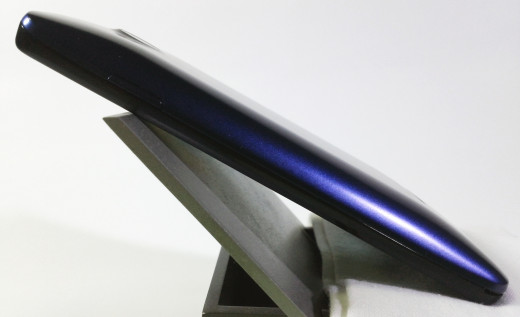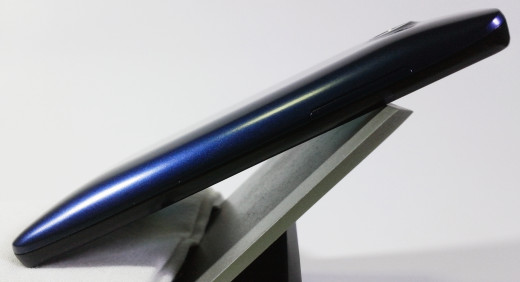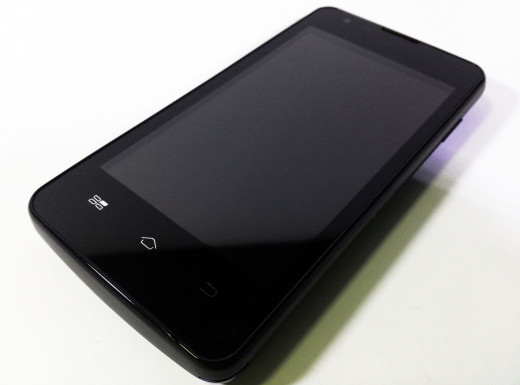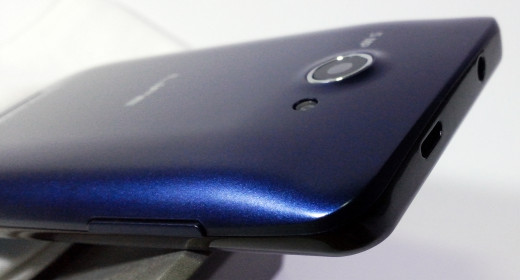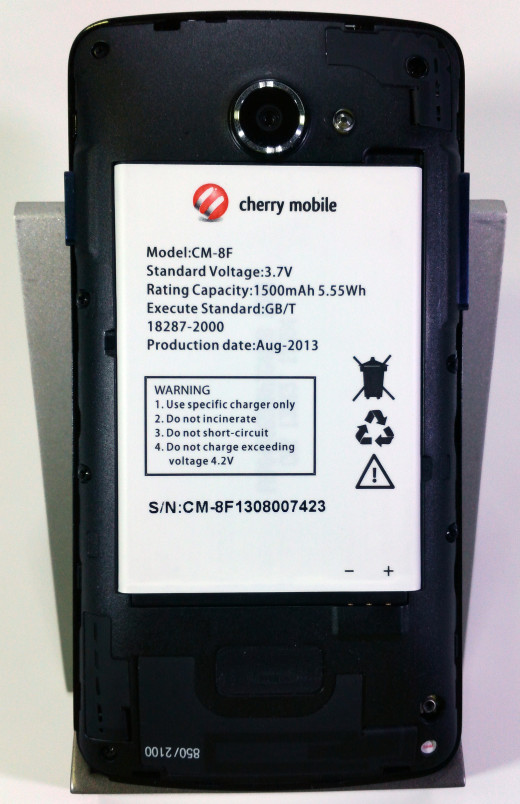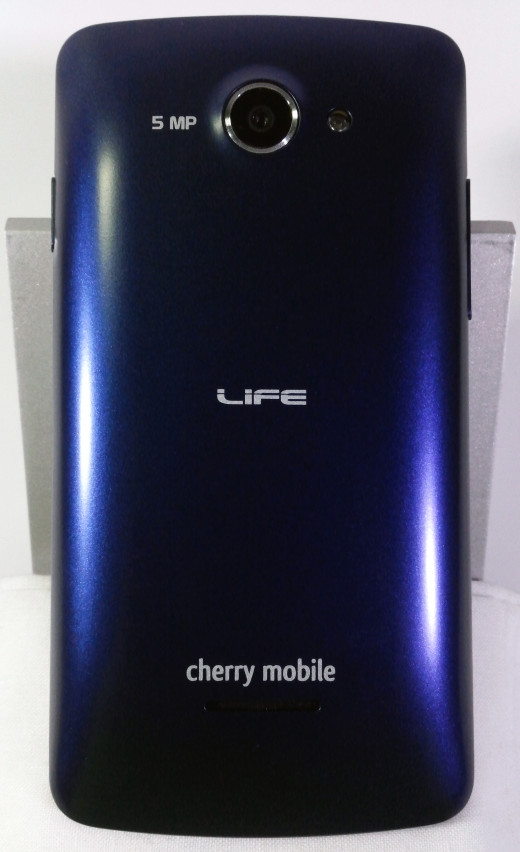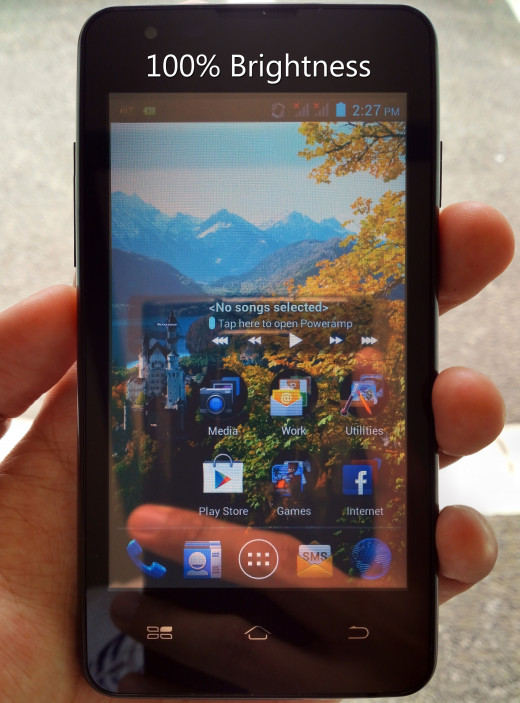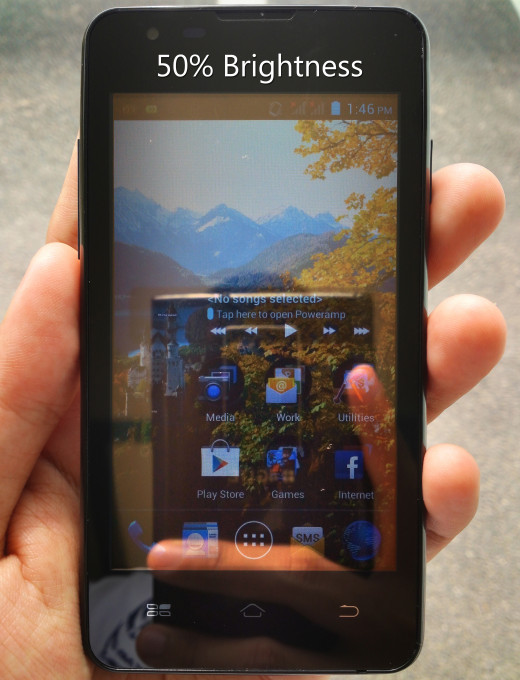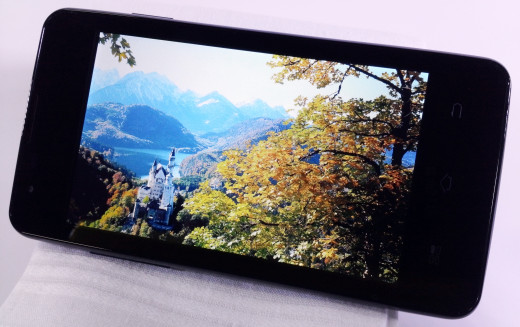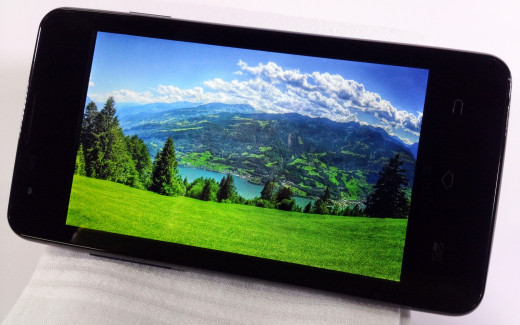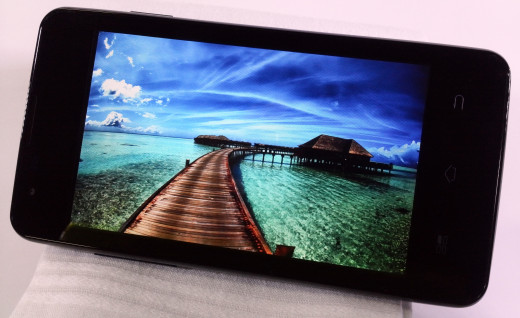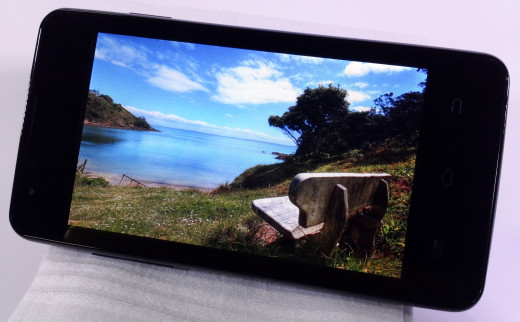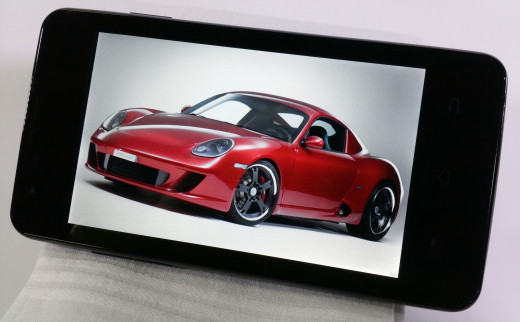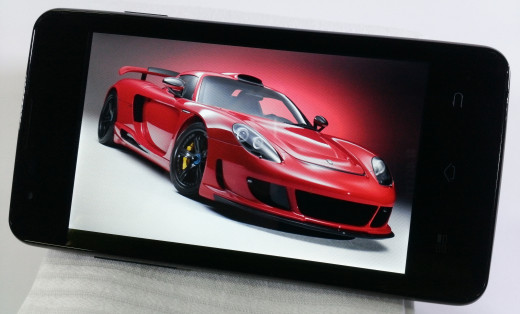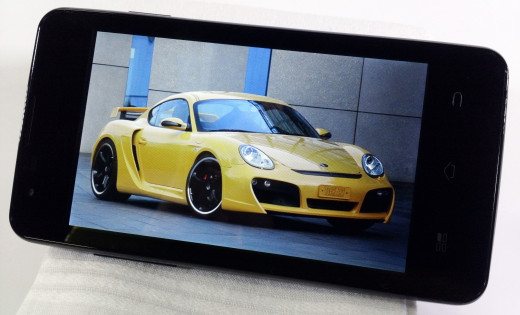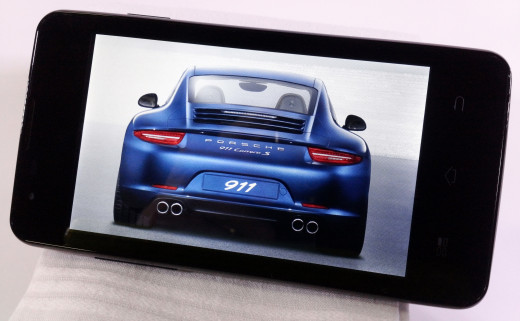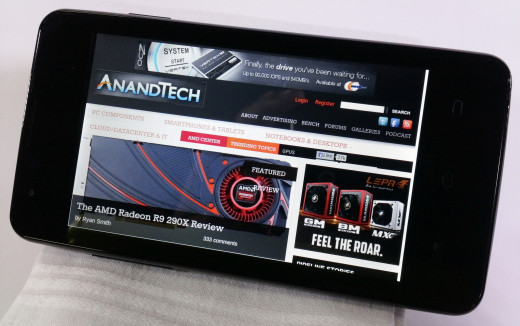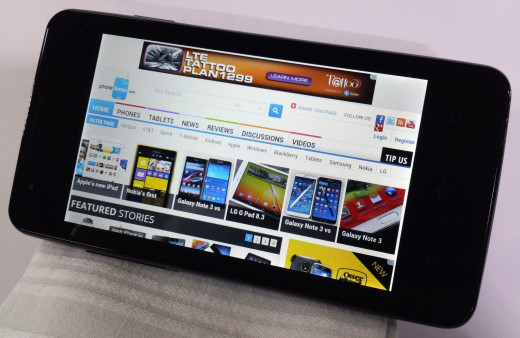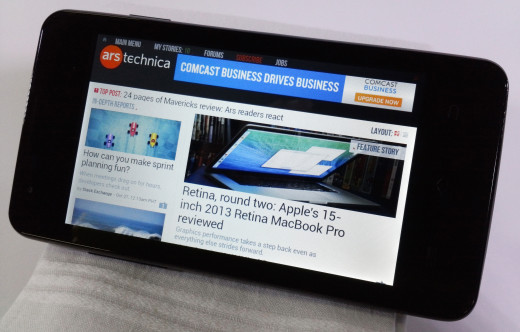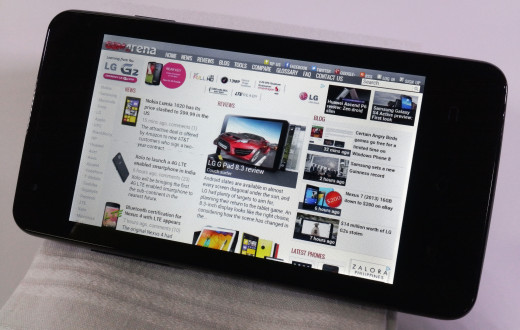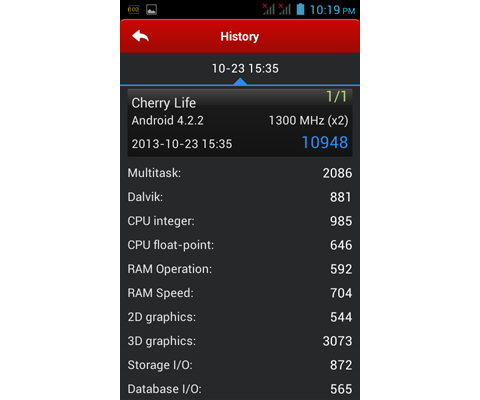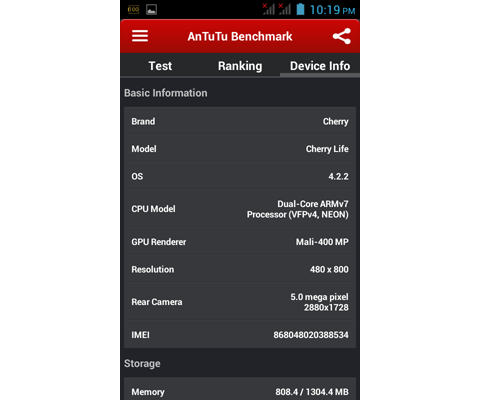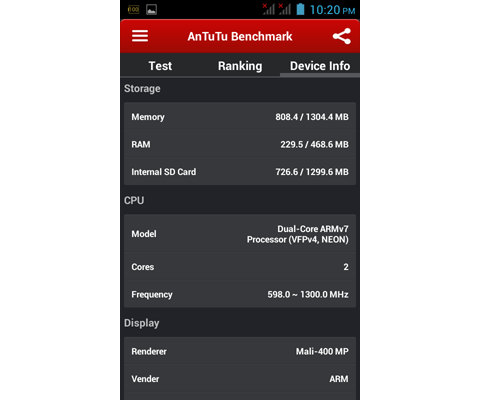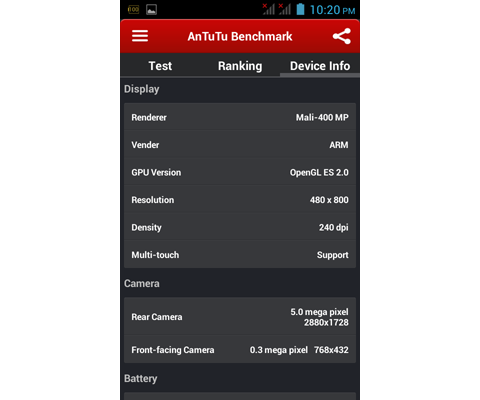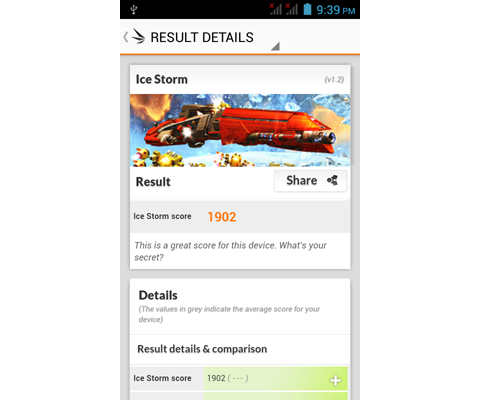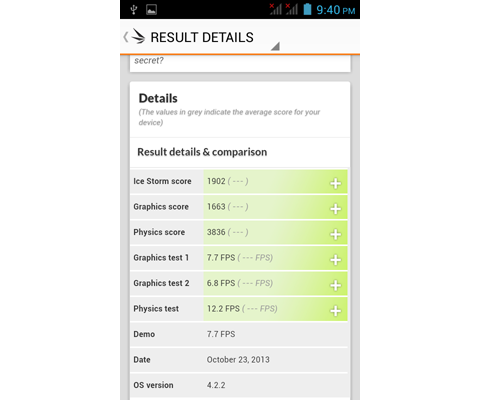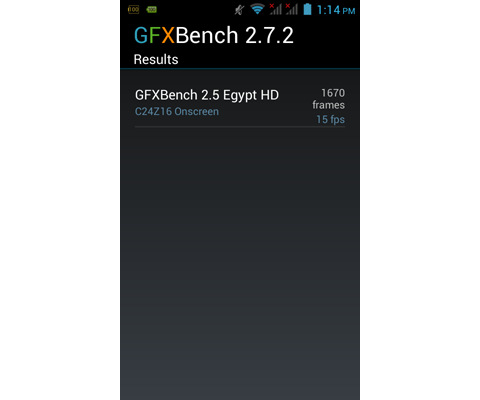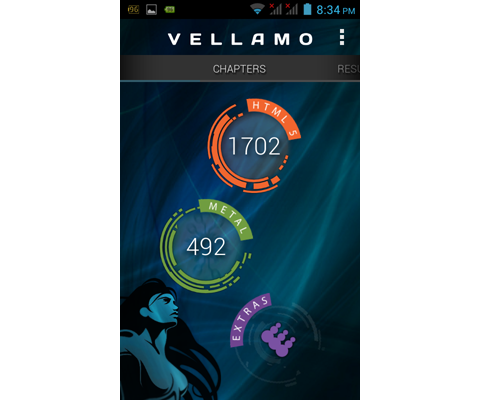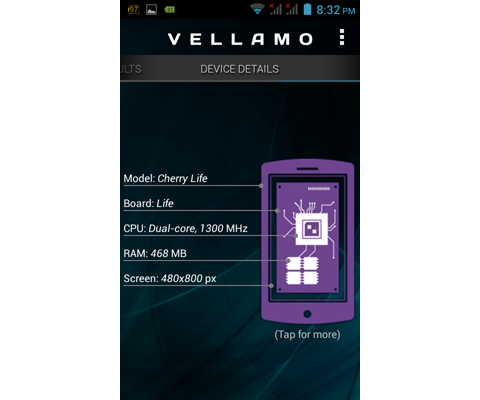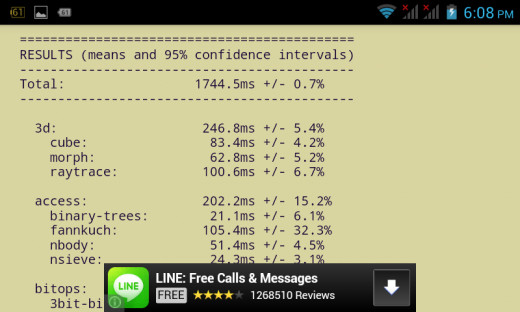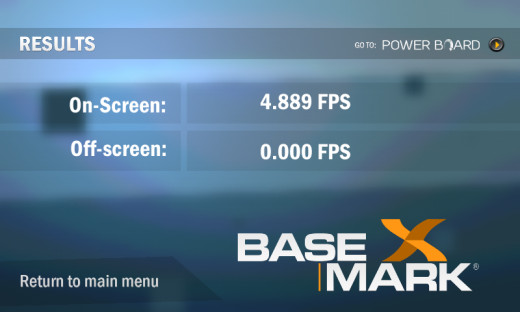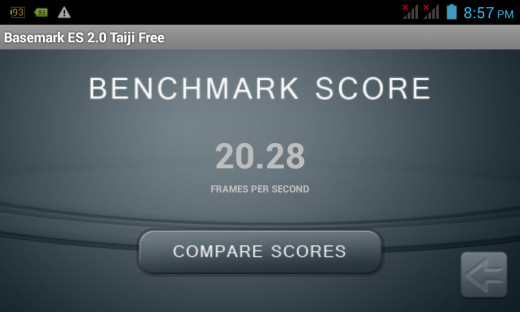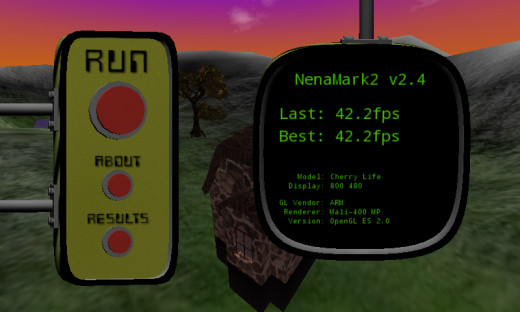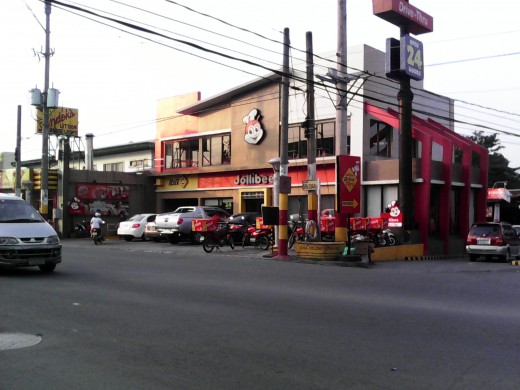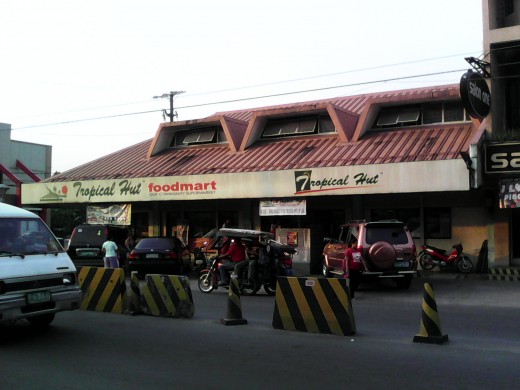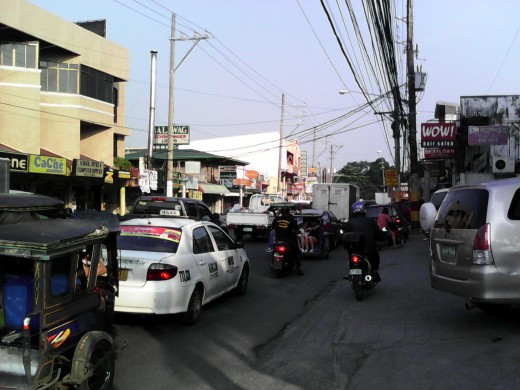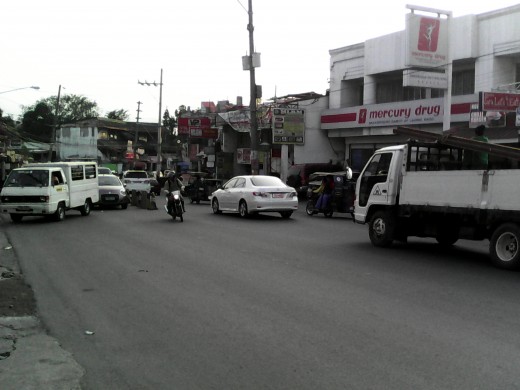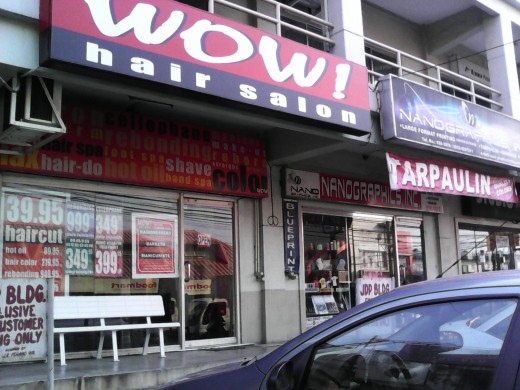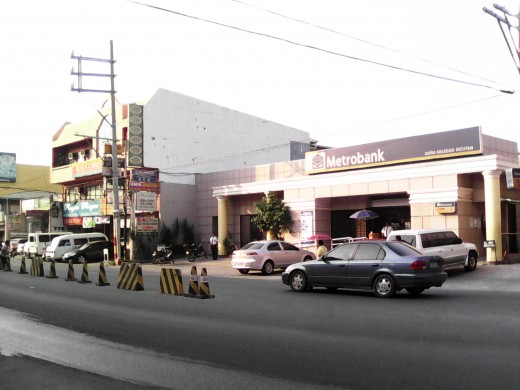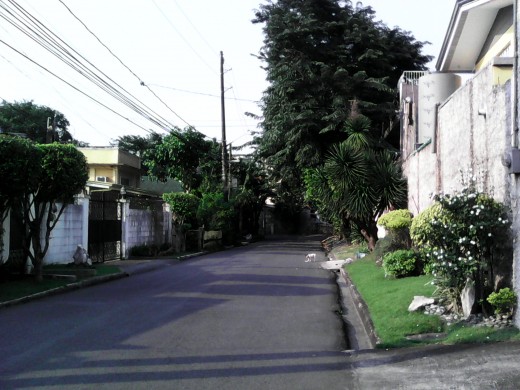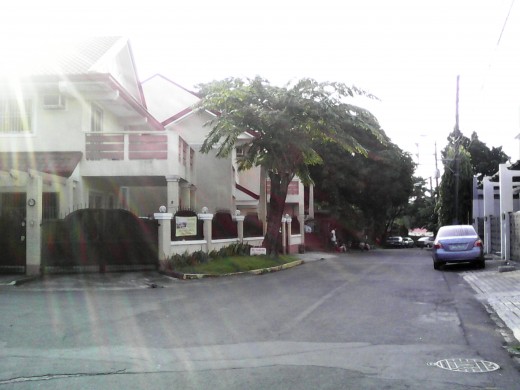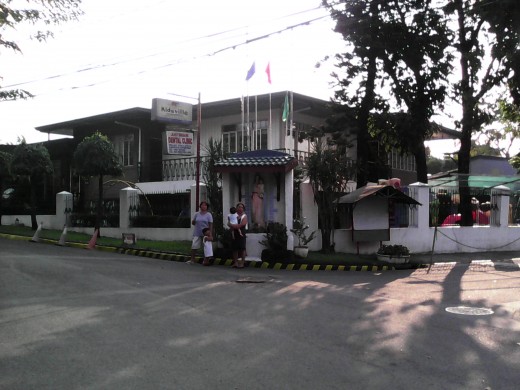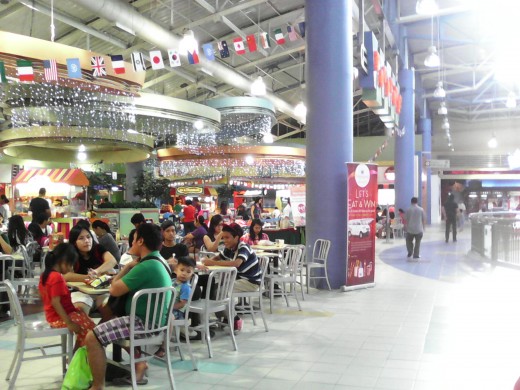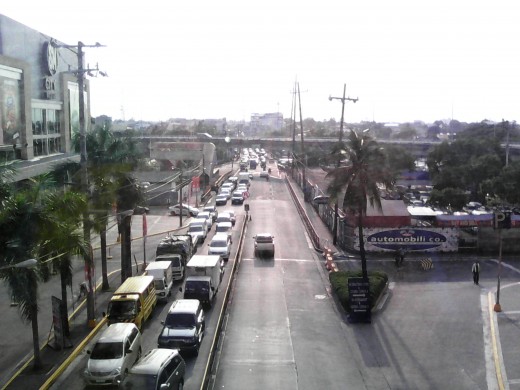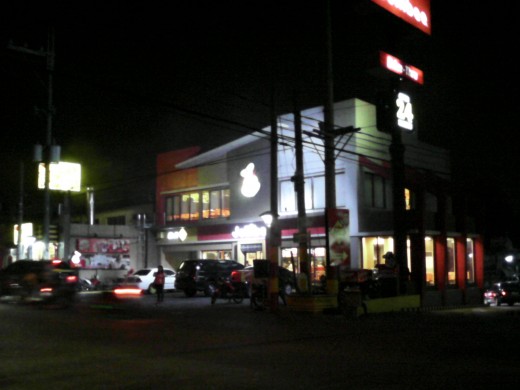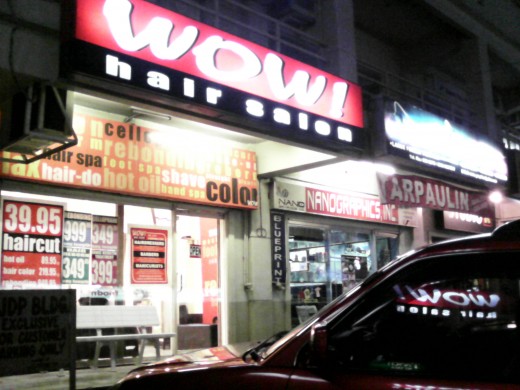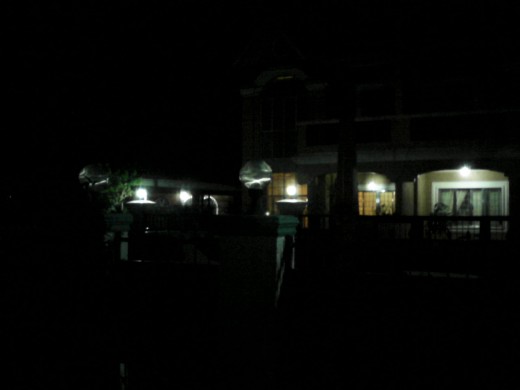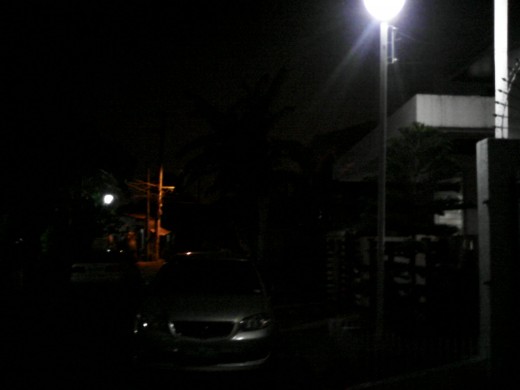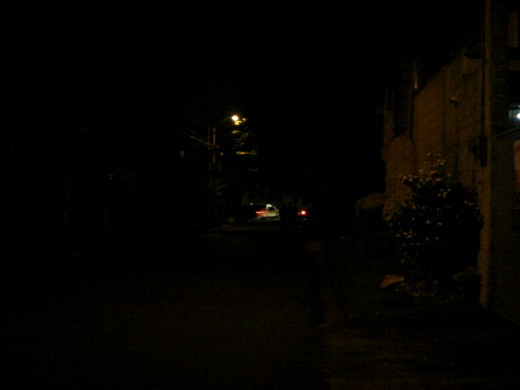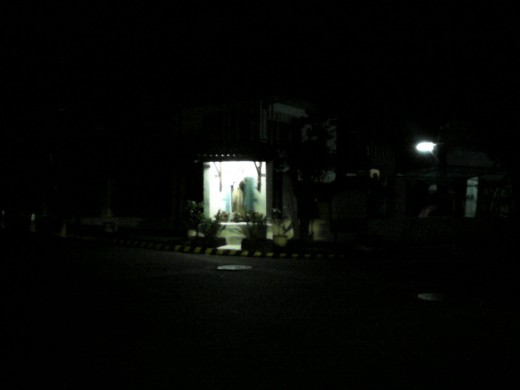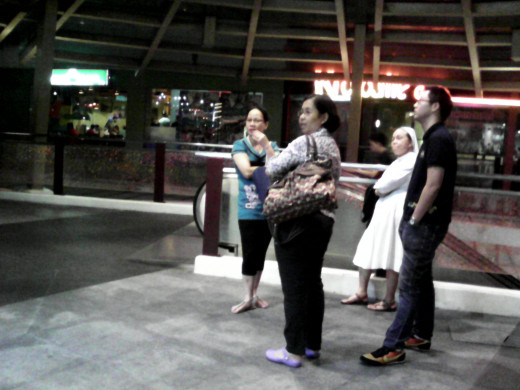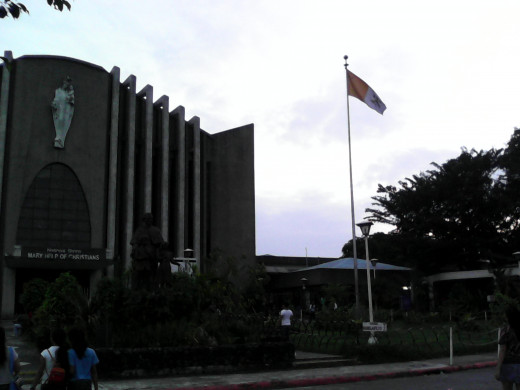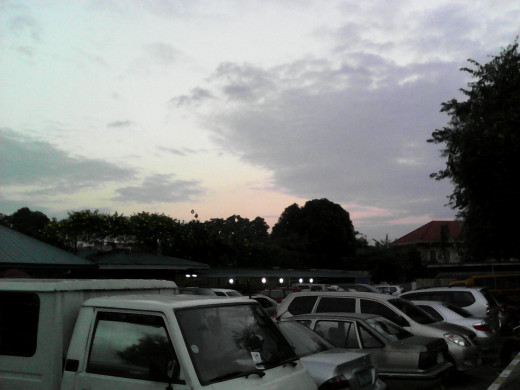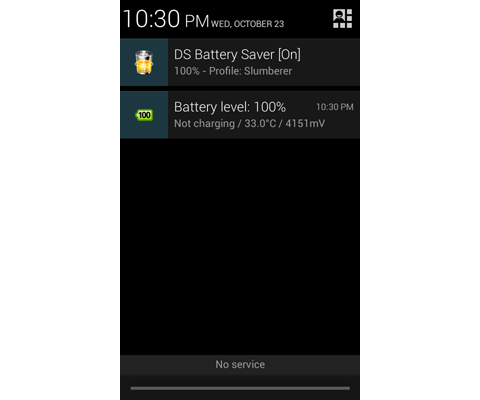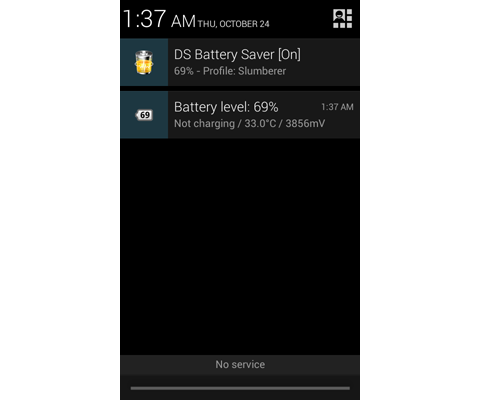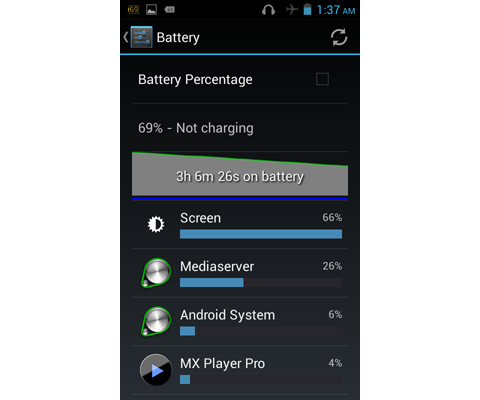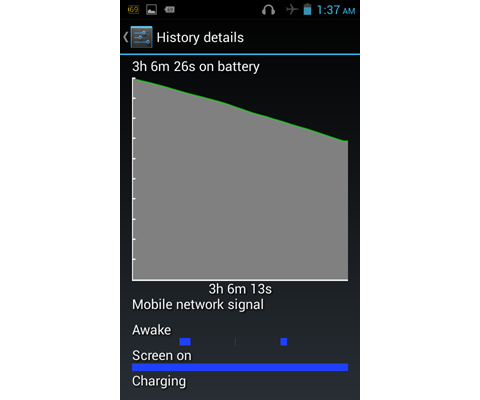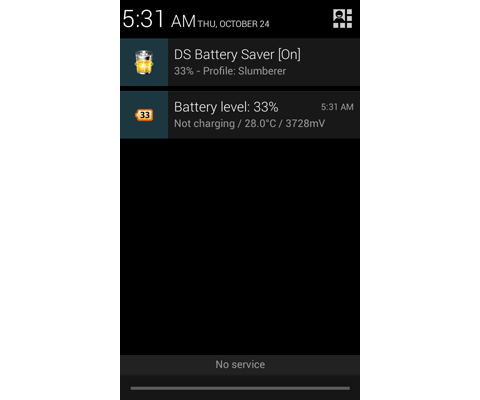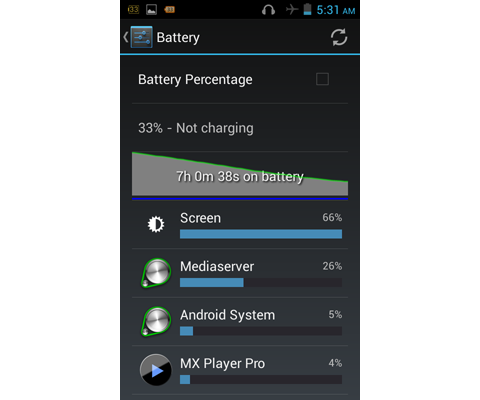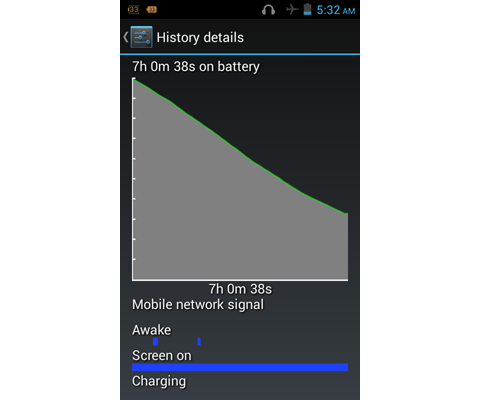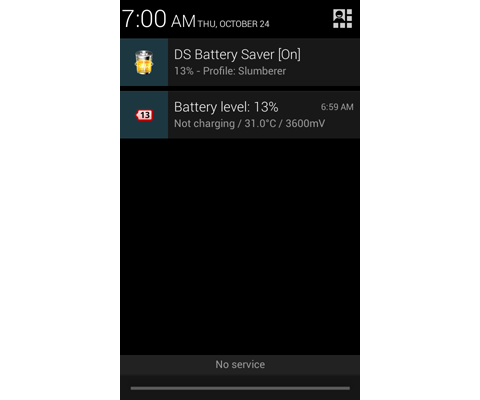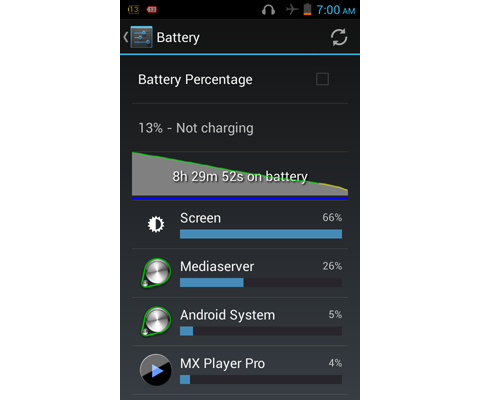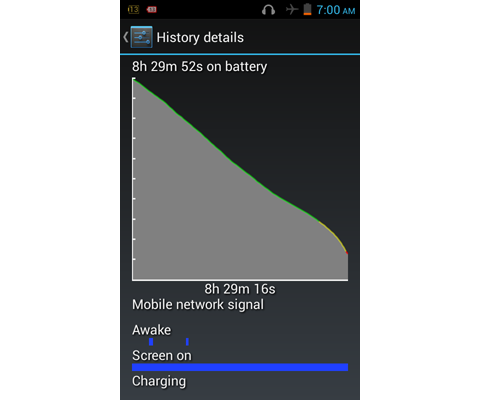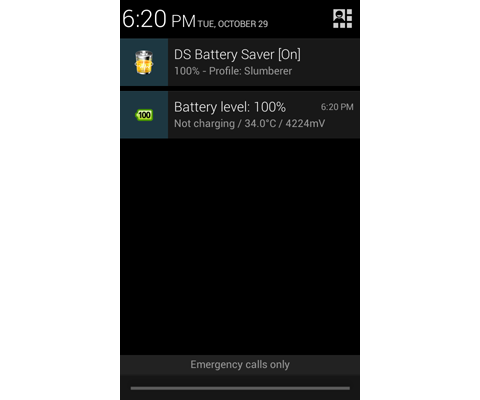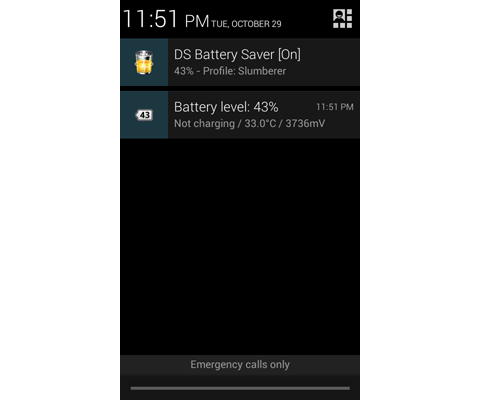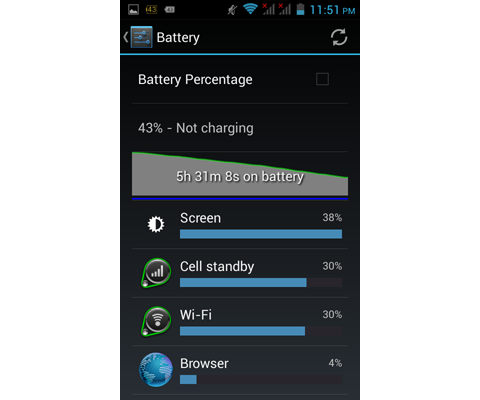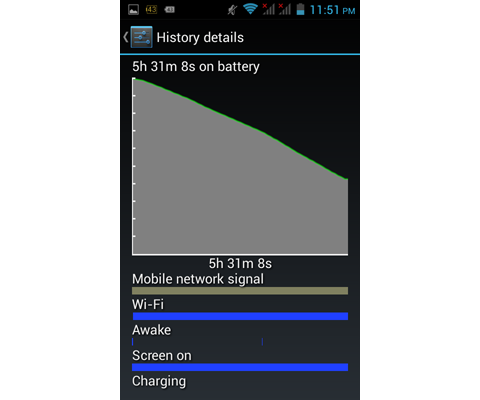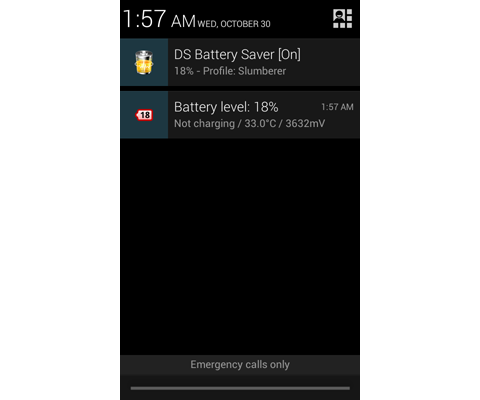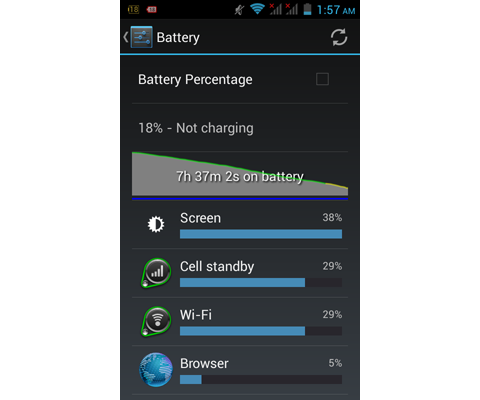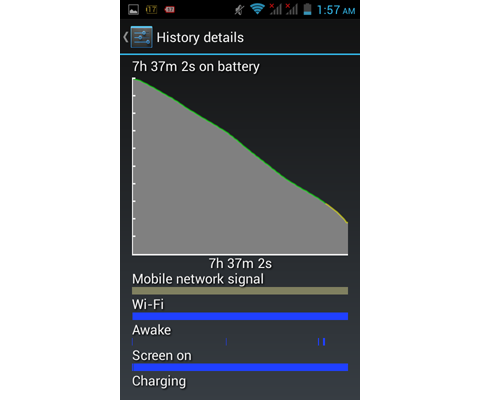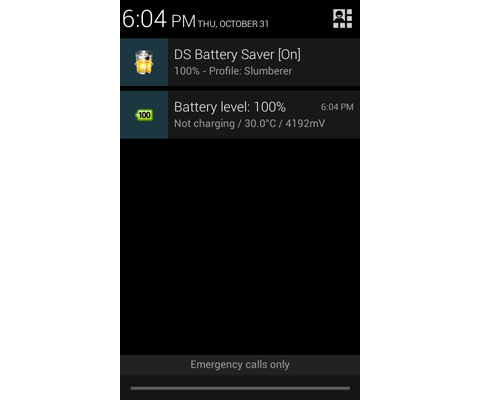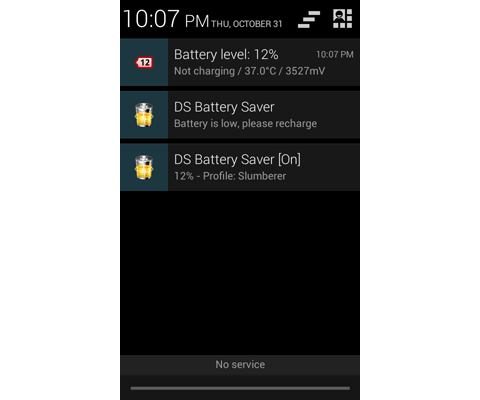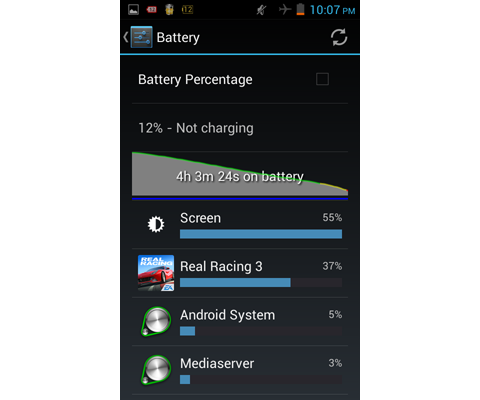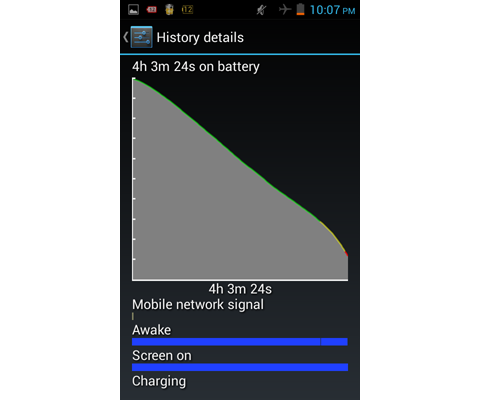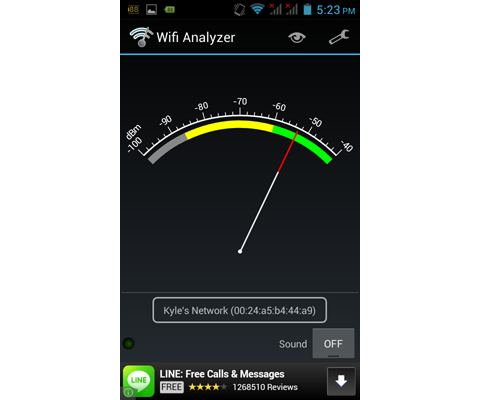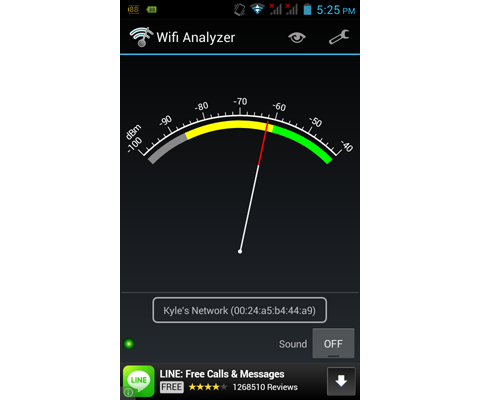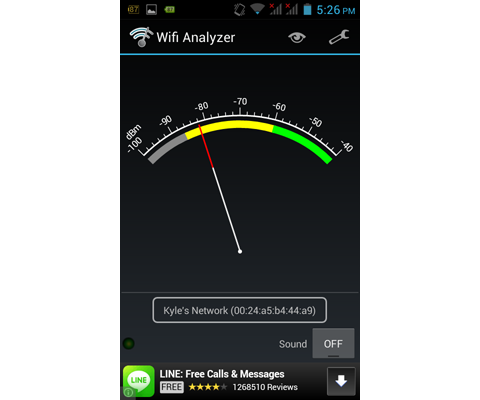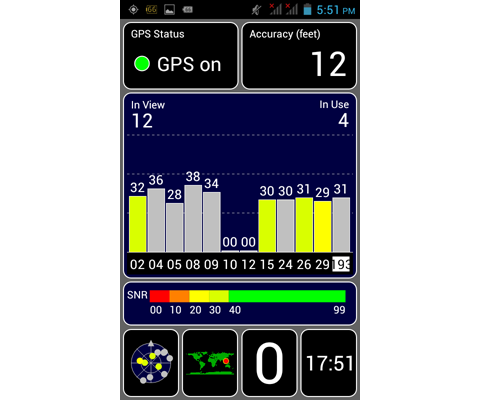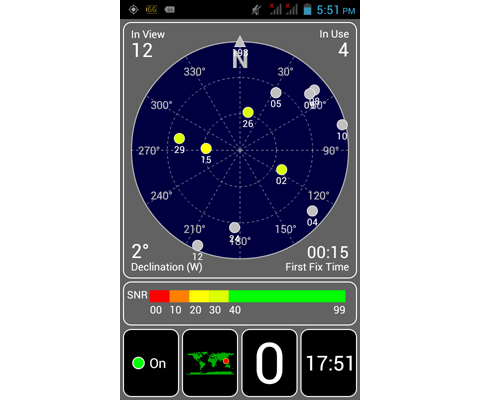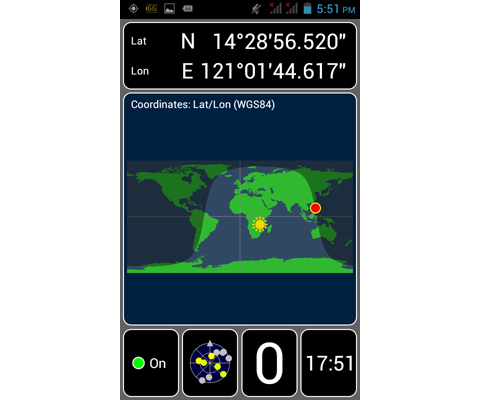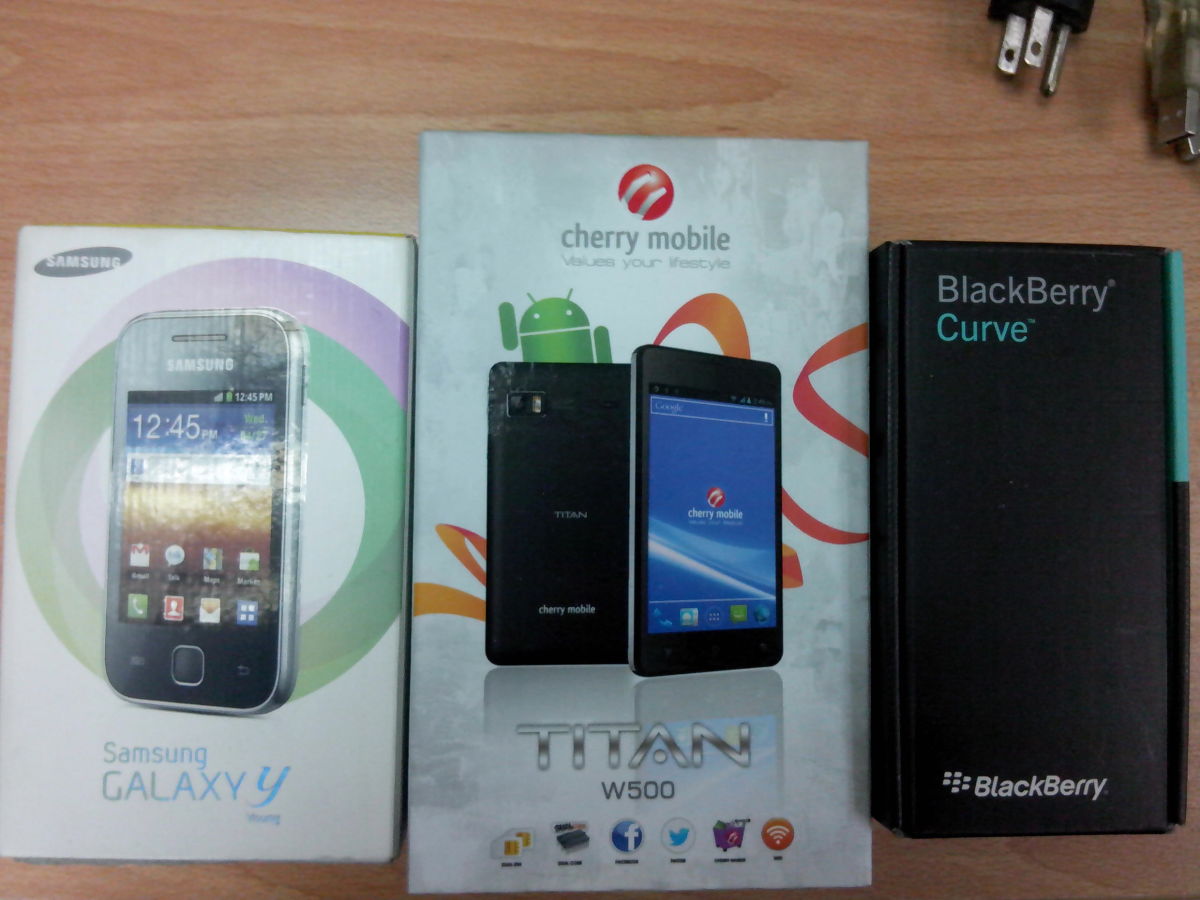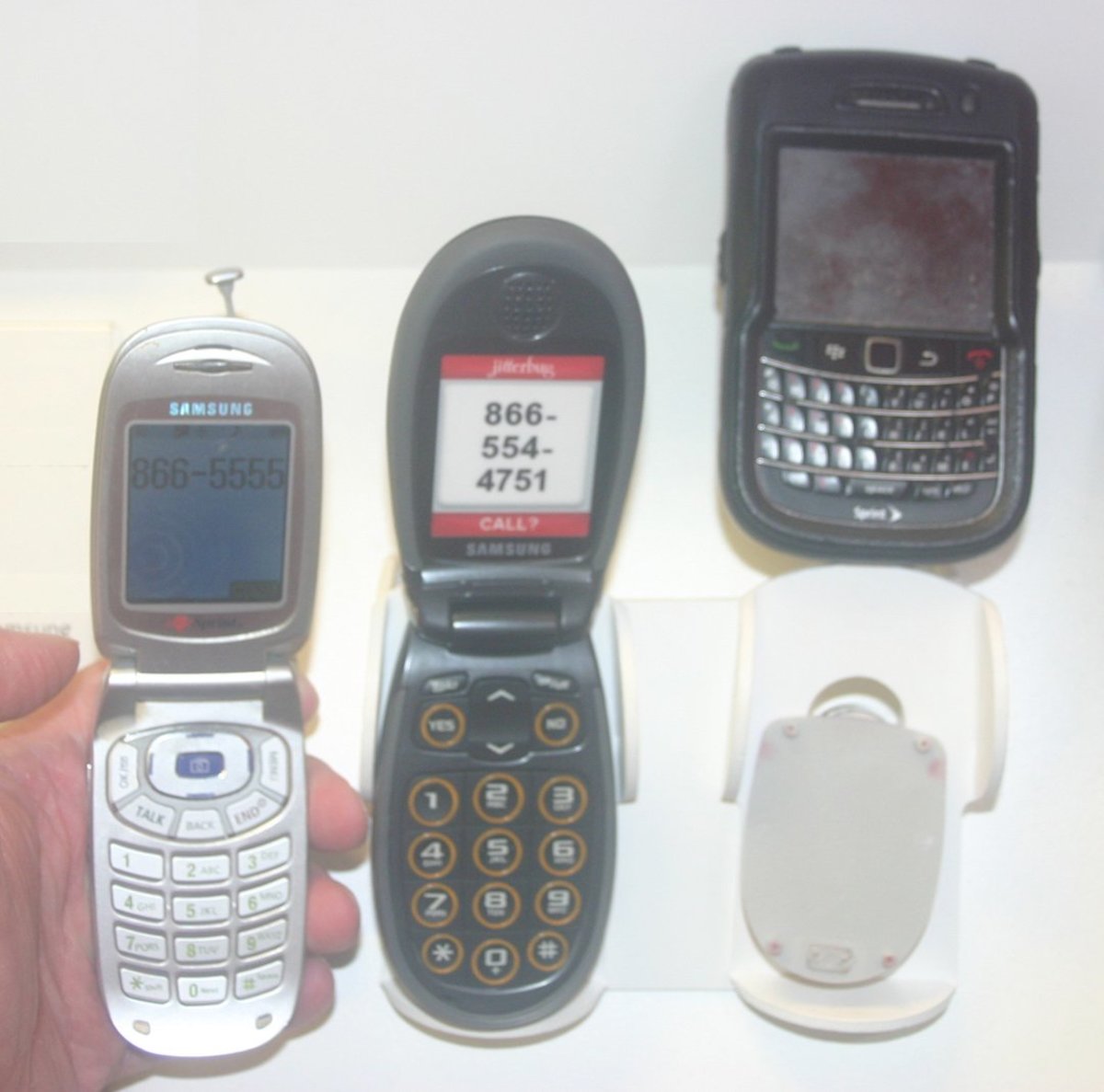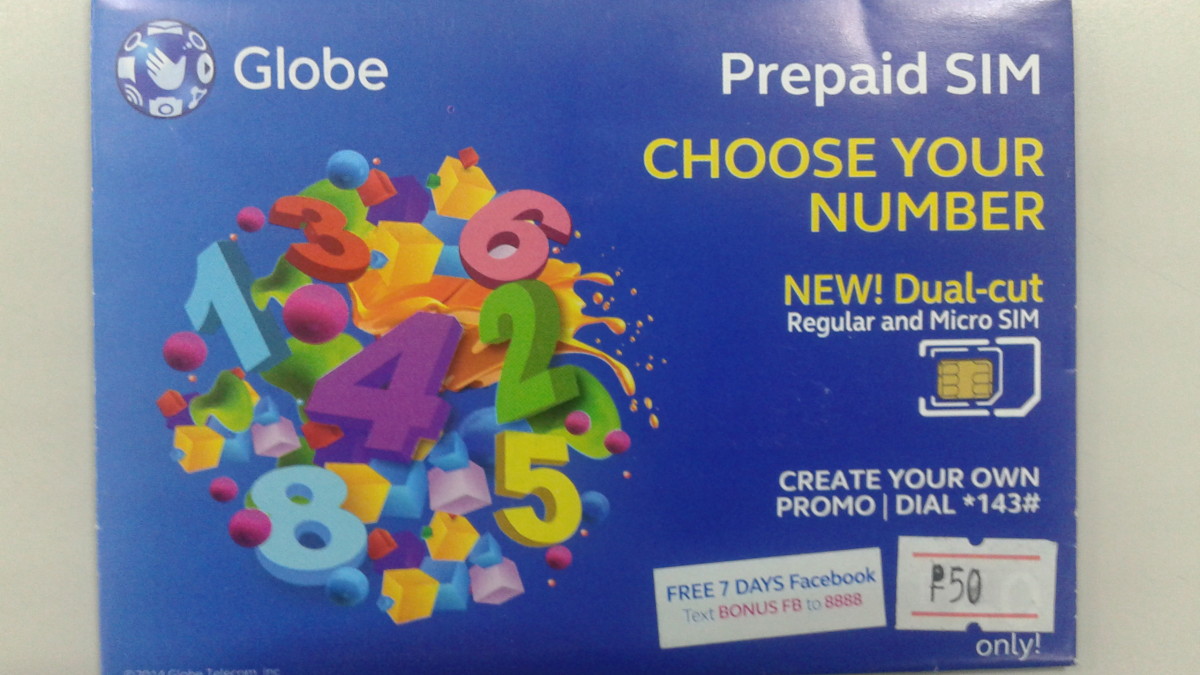Cherry Mobile Life Review
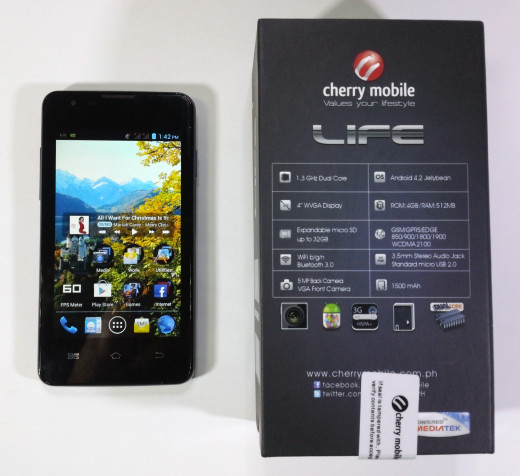
Get low
The continued proliferation of Android has been driving featurephones to extinction as Android phones have been becoming cheaper and cheaper. Despite the onslaught of cheap Android smartphones from local brands for the past year, the price point below the original Cherry Mobile Flare of below 3,999 Php hasn't seen much fanfare because Android phones below that price point have been lackluster in terms of specifications -- and we all know that specs are the biggest differentiating factor on Android. In short, people either spend more past the 3,000 Php price point for an Android with more tried and tested specs, or spend less a lot less for a featurephone.
The Cherry Mobile Life with its 1.3 Ghz dual core processor and 512 MB of RAM headlines to push Android to even lower price points and convince people who traditionally buy featurephones in the under 2,000 Php price point to go smartphone with the Life's 2,999 Php price tag. Thing is, is the Life a big improvement from the current Android phones we see in the 3,000 Php price point or is it another lackluster attempt? Read on to find out.
Design and Build Quality
The Life doesn't seem to take any particular design cues from any of the major brands. It's spartan. From the front, it does look similar to the original Cherry Mobile Flare. The capacitive buttons below the screen aren't backlit but are sort of reflectorized so it can still be seen in the dark with just the minimal reflected light from the screen as your fingers hover over it. The sides are slightly curved and the back cover tapers so it's easier to hold. I believe they did as much as they could with the functional design considering the price is supposed to be cheap.
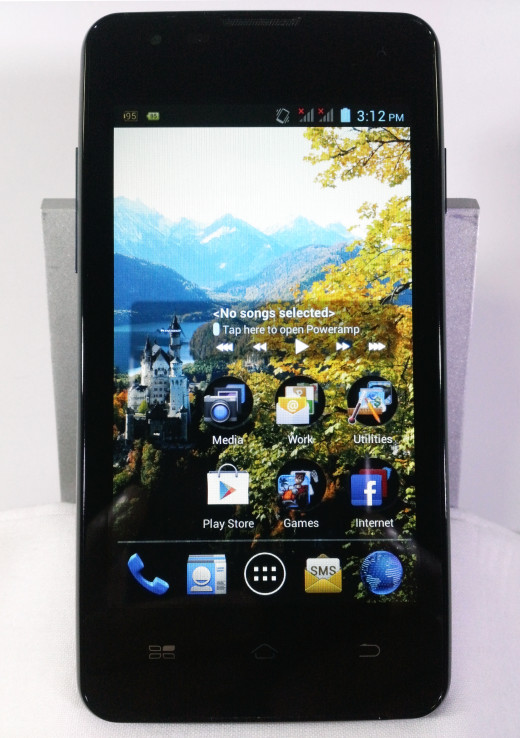
Given the 2,999 Php price tag on the Life, don't expect any fancy design or touches although admittedly there are other phones with more colorful, "fun" designs around the 3,000 Php mark. Simply put, it's practical. The entire body is made of plastic, with the back cover made of ABS plastic with a lacquer finish to ensure a smooth, polished feel. but not exactly slippery and gloss like with polycarbonate plastic. My only design quirk is that both the micro USB port and 3.5 mm port are on top, so when playing games in landscape mode while both charging and with earphones, your index and middle finger in one of your hands have nothing to rest on.
Its ergonomics is about as practical as its design and it's easy to wield despite not being very thin with its dimensions of 123.5 x 64 x 12.5 mm. The phone is also light at 118 grams but doesn't feel hollow. It feels quite solid, with no creaking when squeezed tightly in hand. I believe this is a phone that can suffer some beating.





The Life's back cover is easy to remove with a slit located at the lower left corner of the phone's back. However, neither SIM card or micro SD card slots are hot-swappable since they're located underneath the battery.


The Cherry Mobile Life does not come with a preinstalled screen protector out of the box and I advised you install a screen protector (preferably clear) right after purchase.
Here is a checklist of what comes inside the box:
- 1x Cherry Mobile Life
- 1x 1500 mAh battery
- 1x 800 mA charger
- 1x USB cable
- 1x Headset
- 1x User's manual
- 1x Warranty card
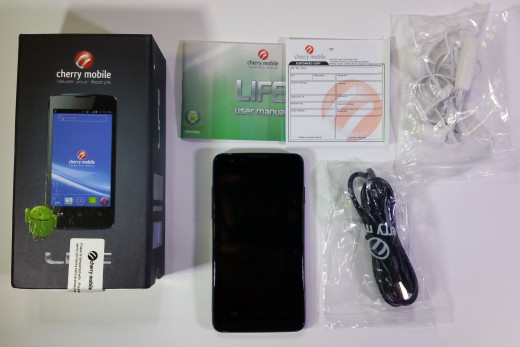
Screen
The Cherry Mobile Life is equipped with a 4.0" WVGA (800x480) screen that supports 2 point multitouch. Considering the Life costs only 2,999 Php, a WVGA screen is good and it's even better that the manufacturer didn't go for the lowest quality TN panel available. The TN panel on the Life has good viewing angles from the left or right side. The top side viewing angle is worst as "colors invert" as most would describe it. The bottom side viewing angle starts to lose contrast when viewed over 30 degrees off center. Worse TN panels would require you to look at the screen dead center. The Life offers some leeway by still looking decent at not-so-extreme angles barring the top side viewing angles.
I have also read that others have problems performing rapid touch typing on a 2 point multitouch panel like on the original Flare, but I don't share those sentiments and I haven't had problems typing fast on the Life.
Here are some shots of the Life's screen demonstrating viewing angles:
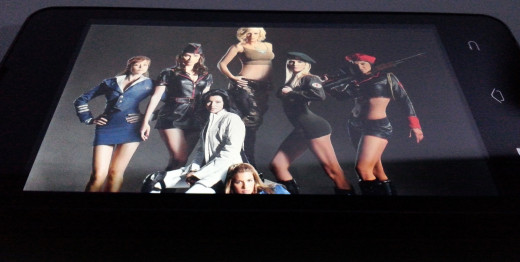
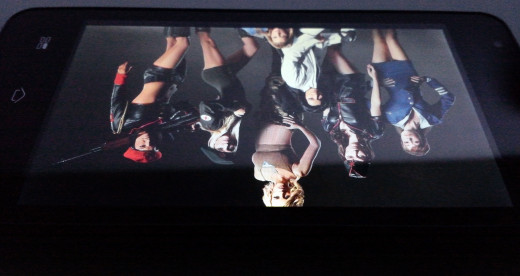
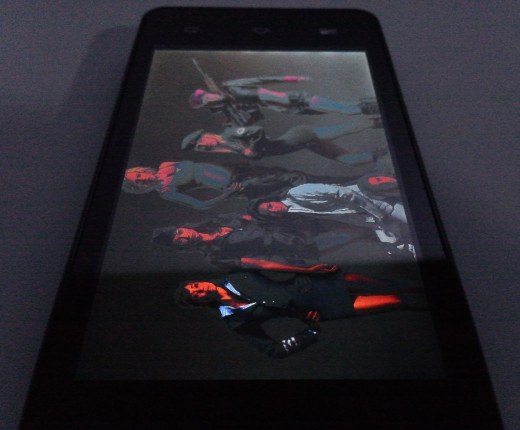
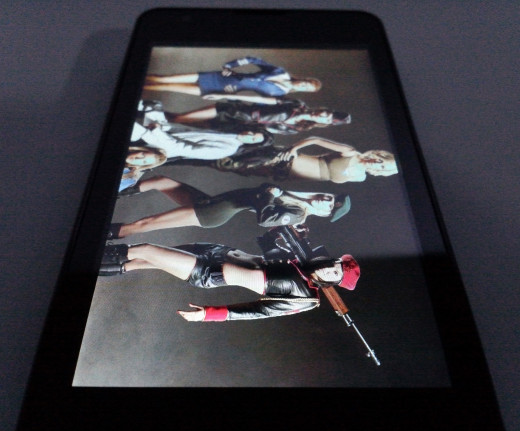
There is a noticeable gap between the panel and the glass, similar to that on the original Cherry Mobile Flare. The gap reduces light transmission and introduces additional diffusion in daylight making sunlight legibility bad at low brightness, especially considering the brightness on the Life's screen is already relatively low. I would recommend at least 70% brightness in daylight and 100% brightness directly under intense sunlight for the screen to be comfortably legible. I also don't like the surface of the acrylic glass they use on the screen. While the glass itself is clear and doesn't disperse light (no "matte-like" effect), the surface isn't as slippery as I'd like and my fingertips do encounter a bit more resistance than usual while swiping. I suggest a clear screen protector be attached immediately after purchase so handling the touchscreen becomes easier, especially if you prefer using your index finger rather than your thumb for interacting with the screen.


The panel is a standard fare TN panel. Vanilla. As such, the color temperature is very much on the cold side. Thankfully, contrast and saturation is good, with relatively rich looking colors imitating a wider color gamut. Whites do look more gray than white and blacks do look blueish-black than black, especially when you put the Life next to a phone with a good IPS display, but colors in the warmer side of the color spectrum (i.e. yellows, oranges, reds) do look more or less like they would on a better display.
My main gripe with the screen is that it's a bit dim, even for a TN panel. On other phones, I would set brightness to 0% at night. On the Life, I'd set it to 20%. The Life also doesn't have a light sensor, so brightness can't be set to automatic.








As with other WVGA (800x480) screens and combined with the relatively small 4" screen, increasing text scaling in the browser is recommend for viewing desktop webpages on the Life as text would be otherwise too small to read.
Overall, the Life's screen is honestly better than I expected at this price. Most phones in this price point use crappier TN panels with three sides that have bad viewing angles, while others are still HVGA resolution (480x320) and there's a big difference in sharpness between HVGA and WVGA. Also, on the LIfe you actually get decent viewing angles save the top side. Aside from the screen brightness, you can certainly expect a lot worse at this price point.




Performance
The Cherry Mobile Life is powered by a MediaTek MTK6572 SOC. The MTK6572 has two Cortex A7 cores running at 1.3 Ghz and Mali-400MP graphics at 500 Mhz. The best part about the MTK6572 is that it's manufactured at 28 nm, meaning it would be significantly more efficient than SOCs manufactured on the older 45 or 40 nm process. Note that the MTK6577 and MTK6575 are manufactured at 40 nm, as well as the 2G-only MTK6517 and MTK6515 which rounds up MediaTek's previous generation smartphone SOC line-up.
Most notable here is the dual core implementation of the Cortex A7 at 1.3 Ghz, which makes it a match for the older MediaTek MTK6577 in terms of CPU power. The MTK6577's dual core Cortex A9 at 1.0 Ghz is 5.0 DMIPS (where DMIPS = 2.5/Mhz @ 1 Ghz) while the MTK6572's dual core Cortex A7 at 1.3 Ghz is approximately 4.94 DMIPS (where DMIPS = 1.9/Mhz @ 1 Ghz). The MTK6572 basically replaces the old MTK6575 as the lowest-end in their line-up according to MediaTek's 2013 roadmap as the 40 nm parts are already phased out and are reaching EOL.













Benchmark
| Score
|
|---|---|
AnTuTu Benchmark 4
| 10948
|
Linpack - Single Threaded
| 60.748 MFLOPS
|
Linpack - Multi Threaded
| 87.528 MFLOPS
|
SunSpider v1.0
| 1744.5 ms
|
Vellamo - HTML5
| 1702
|
Vellamo - Metal
| 492
|
GFXBench - GLBenchmark 2.5 Egypt HD
| 15 FPS
|
Basemark X
| 4.889 FPS
|
Basemark ES 2.0 Taiji
| 20.28 FPS
|
Nenamark 2
| 42.2 FPS
|
3DMark - Ice Storm
| 1902
|
Combined with the efficiency increase that the smaller 28 nm manufacturing process brings, the MTK6572 is effectively a smaller, cooler running update to the MTK6577 that's been relegated to the low-end. However, the Mali-400MP graphics on the MTK6572 packs a wallop. It's almost as fast as the graphics on the MTK6589M, but not quite. In real world use though, the difference is small against the MTK6589M which powers the Cherry Mobile Burst 2.0 I recently reviewed. Against the older PowerVR SGX531 Ultra on the MTK6577 and the Adreno 203 on the MSM8225/8225Q, the Mali-400MP on the MTK6572 is definitely a step ahead.
Speaking of cooler running, the MTK6572 is surprisingly cool, being only slightly warm even during prolonged gaming sessions with graphics-intensive games. The lower heat also allows longer use times as the battery isn't as stressed as you will see in the battery section. As for the performance in graphics-intensive games, since the screen resolution is only 800x480 and the performance is close to the MTK6589M, you can expect the Life to run even more graphically demanding games smoothly, preferably at medium or lower graphics settings if available.
The hardware video decoder on the MTK6572 is surprisingly as capable as the one found on the MTK6589, being able to decode up to 1080p H.264 video. Unsurprisingly, the dual cortex A7s are unable to decode 1080p H.264 via software decoding without dropping frames, just like on the MTK6577 which has similar CPU performance. 720p is very smooth though, even with software decoding. Below is the result of testing several HD videos on the Life. MX Player was used for testing. Audio decoding is set to software as the hardware decoder on the MTK6572 cannot decode multi-channel audio.
1280x534 @ 24 FPS, AVC High Profile L4.1, with CABAC, 5 reference frames
| 1280x528 @ 24 FPS, AVC High Profile L4.1, with CABAC, 4 reference frames
| 1280x528 @ 24 FPS, AVC High Profile L4.1, with CABAC, 8 reference frames
| 1920x800 @ 24 FPS, AVC High Profile L4.0, with CABAC, 5 reference frames
| |
|---|---|---|---|---|
Video bitrate:
| 1362 Kbps
| 2270 Kbps
| 2911 Kbps
| 3703 Kbps
|
Audio:
| 448 Kbps, 6 channels AC-3
| 401 Kbps, 6 channels, AAC
| 395 Kbps, 6 channels, AAC
| 306 Kbps, 6 channels, AAC
|
Plays via hardware decoder:
| Yes
| Yes
| Yes
| Yes
|
Plays via software decoder:
| Yes
| Yes
| Yes
| Yes
|
(HW) Has dropped frames:
| No
| No
| No
| Yes, a few during fast paced scenes
|
(SW) Has dropped frames:
| No
| No
| No
| Yes, many
|
Camera
The Life is equipped with a fixed focus 5.0 megapixel camera with an aperture of f/2.8 and focal length of 4 mm. The image sensor used is a 2 megapixel GalaxyCore GC2035 which has a sensor size of 1/5", aspect ratio of 3:2 with a pixel size of 1.75 µm. The smaller sensor and focal length of 4 mm leads to a narrower FOV (field of view) compared to most phones with a true 5 or 8 megapixel camera, most of which come in either 1/4" or 1/3.2" sizes. On the plus side, this means that the frame is smaller and that focus uniformity is better, meaning you can still capture decent detail despite the low sensor resolution.
The camera UI is stock Android 4.2 where still shot and video recording share the same interface.
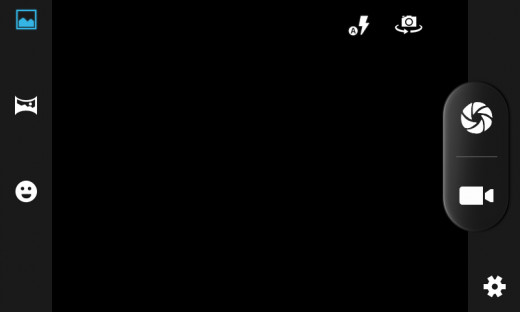
The Life's camera is frills-free and there are only a few manual controls and shooting modes. Of the shooting modes available, you only have normal, panorama and smile shot. You can also take continuous shots by holding the shutter button. For manual controls, you have exposure (+/- 1 step), color effect (filters), scene mode (which only has auto and night mode) and white balance. There's also this issue I have where I cannot change the save location of the camera captures, so the default storage will always be the internal storage. You can make a workaround by pairing the 'sdcard1/DCIM/camera' folder using FolderMount to some folder on your SD card so it saves there automatically.
As the camera on the Life is fixed focus, you will not be able to take macro shots. For a 2 megapixel sensor taking shots upscaled to 5 megapixels, the picture quality isn't bad considering there are other Android phones in the 3,000 Php range with far worse cameras. The hue may be a bit off and the sensor is a bit prone to overexposure due to the slow shutter (which can be corrected by adjusting exposure on-the-fly), but it's relatively decent. For shots made in good lighting, pictures are definitely decent enough for web use or maybe a wallet-size 3R photo. For shots in low light, just make sure the subject is perfectly still for two to three seconds because the already slow shutter speed becomes even slower. It takes nearly 2 seconds for the picture to be captured after pressing the shutter, and that's extended by another second in low light. In low light, the LED flash on the Life is so weak that it's next to useless. It's more of a torchlight instead of a flash. It's advised to take shots in decently lit places at night.
Life Sample Shots (Good lighting)
Click thumbnail to view full-size











Life Sample Shots (Low light)
Click thumbnail to view full-size










Life Sample Shots (Panorama)
Click thumbnail to view full-size

Technically, the MTK6572 should be able to encode video in 720p30 which would be very nice at the Life's price point. However, the Life's video recording is half-baked because the phone records video at only 12 FPS, regardless of what resolution you pick. I would've understood if they managed to have only 720p (fine setting) recording have low framerates because of lack of optimization, but having 480p (high setting), 320p (medium setting) and 144p (low setting) also suffer low framerates is carelessness on the part of the manufacturer. A software update should be able to fix this. As for size, videos recorded in 720p are encoded in MPEG-4 Visual/Part 2, Level 4 Main Profile between 10 to 11 Mbps. Audio is encoded in stereo AAC at 128 Kbps. 720p footage taken by the Life is around 70 MB per minute.
Below are video recording samples taken by the Cherry Mobile Life:
Sample 1 (outdoor):
http://www.youtube.com/watch?v=7D_319oVclY
Sample 2 (low light):
http://www.youtube.com/watch?v=jZUSIDZdtww
Here's the lowdown on the Cherry Mobile Life's camera:
- Relatively decent shots in good lighting, but otherwise below average
- Slow shutter speed, which in addition makes shooting in low light more difficult
- Very weak LED flash
- Lack of auto focus means you cannot perform macro shots
- Few manual controls and shooting modes
- Average video recording with poor frame rates
Lastly, the front-facing camera is VGA only and making video calls is advised in good lighting.
Battery
The Life is equipped with a removable 1500 mAh battery. While this battery capacity isn't big, the super efficient MTK6572 makes up for it big time. Looking at the graph below, you can see that the Life with its MTK6572 managed to extract the most hours relative to its battery capacity in the looping video battery test, even besting the already very efficient MTK6589M on the Burst 2.0.
The phones that did the worst in the graph below have 720p IPS screens since higher resolution, IPS panels consume a lot of power, not to mention the Omega HD 1.0 has a Mediatek MTK6577 which is manufactured on the old 40 nm process. Basically, if the screen is bigger, has a higher resolution, is an IPS LCD, or any combination of these, it will consume more power.
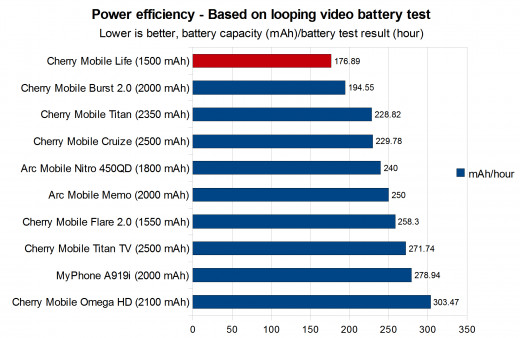
The Life's battery managed to report battery accurately even prior to calibration and that battery decreases by decrements of 1% so you can manage your battery use closely. The battery percentage does drop off faster once below 20%, but nevertheless remains accurate for the entirety.
The following are the test conditions for the three tests. Note that brightness is set to 30% for all tests and that the battery has been calibrated prior to testing:
- Looping video - a 1 1/2 hour 480p XVID/H.263 video is played on loop until the battery level reaches below 20%. Hardware decoding is used for the video and software decoding is used for audio. Earphones are plugged and volume is set to maximum.
- Wifi browsing - a script continuously reloads the page every 30 seconds among a pool of five (5) popular websites until the battery level reaches below 20%. The websites used for the test are heavy on Javascript and HTML5 elements.
- 3D gaming - a graphics-intensive 3D game is run on loop until the battery level reaches below 15%. Built-in loudspeaker is used and volume is set to 50%.
Battery Test - Results
Test
| Hours lasted
|
|---|---|
Looping video
| 8 hours 29 minutes
|
Wifi browsing
| 7 hours 36 minutes
|
3D gaming
| 4 hours 3 minutes
|
As a testament to efficiency of the MTK6572, in my 3D gaming battery test where both the CPU and GPU are on full load, the application itself managed to consume less battery than the screen. Amazingly efficient and it yielded four (4) hours of gaming on a battery that size. As I mentioned in the performance section, the phone remaining cool in most cases helped it yield very good results in the battery tests relative to the small 1500 mAh battery.
Mixed used time as well as standby time is also good, losing less than 5% over a 12 hour period with a single SIM card on 2G signal. The Life should last a day of moderate use on moderate brightness settings (<50% of brightness bar). By moderate use, I refer to a combination of 1 hour of light gaming, 2 hours of 3G web browsing, 30 minutes of talk time and several text messages.
Charging time for the Life is below average though considering the battery size, taking two hours to charge from 10% to 80% with the stock charger, and another hour to a full charge. You can expect at least two full charges from a good 4000 mAh power bank (assuming at least 75% efficiency, hence a good power bank).
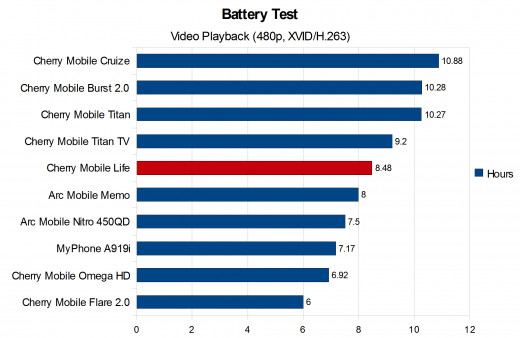
Battery Test - Looping video
Click thumbnail to view full-size









Battery Test - Wifi browsing
Click thumbnail to view full-size






Battery Test - 3D gaming
Click thumbnail to view full-size



Audio Quality
For the rating of audio quality, I will go by the following rubrics:
- Dynamic range - this determines how well the source is able to reproduce varying differences of sound, particularly their degree of quietness and loudness. How clearly a ringing of a cymbal and the boom of a drum is heard and how well-defined each is defined by how high the range is. Perceptibly, this governs the clarity of both low and high frequencies, and sound stage.
- Power output - this determines how much power the source is able to provide to your equipment (i.e. earphones and headphones). The better the power output of your source, the higher the resistance of the equipment you can use on your phone without suffering detail loss, in which event you will be forced to use an external amp. In my ratings, 4 stars defines that the phone is able to provide adequate power with minimal detail loss to equipment with a resistance of up to 64 ohms, provided that distortion is also 4 stars. Perceptibly, higher power output allows you to lower preamp in the equalizer for cleaner detail. It also governs bass impact.
- Stereo Crosstalk - this determines how much leakage or interference is occurring between the left and right audio channels. Lower stereo crosstalk means more accurate sound from their respective channels and less mixing. In my ratings, 4 stars defines a low enough stereo crosstalk to provide a soundstage that only suffer minimal distortion when several instruments play simultaneously. Perceptibly, a better stereo crosstalk rating provides less distortion in poorly mixed tracks and to a lesser degree, affects how wide and defined the sound stage is.
- Distortion - this determines how much power can be delivered by the source without altering the signal. In my ratings, a better distortion rating perceptibly means your phone can playback at higher volume without suffering detail loss through distortion. In my ratings, 4 stars defines that the phone is able to play at 9/10 of the volume bar with minimal detail loss.
- Noise - not to be confused with SNR (signal-to-noise ratio), noise in my rubrics simply defines how clean the signal is when the frequency is at rest, or perceptibly how much hissing there is when there is quietness. In my ratings, 4 stars defines that there is virtually no hissing when there is silence in the track during playback.
Here is how the Cherry Mobile Life does against phones I have or have reviewed before:
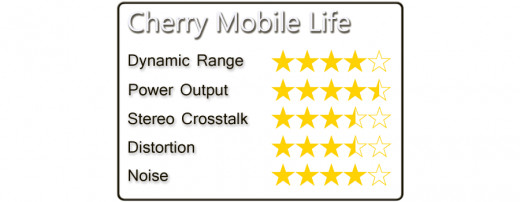
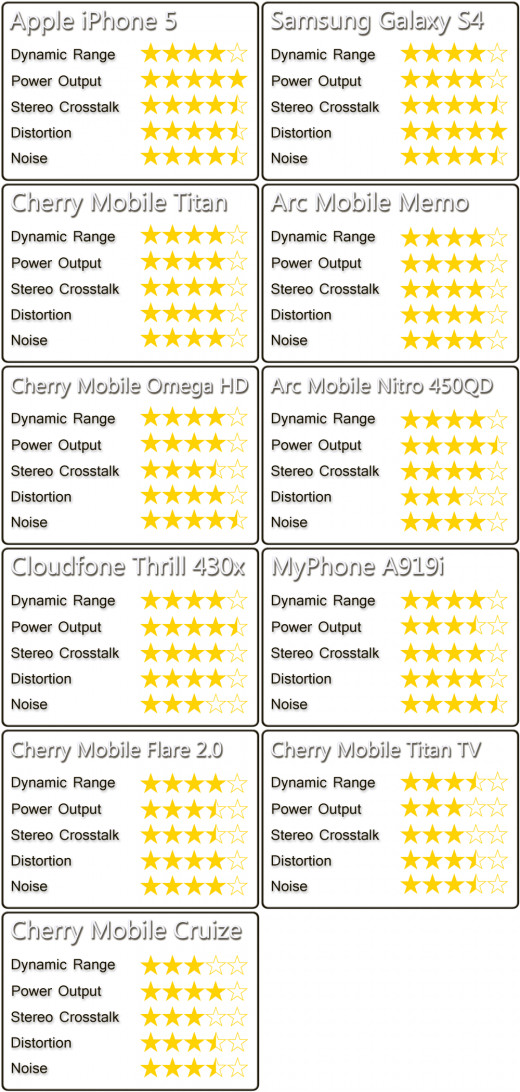
The Life has surprisingly decent audio quality. While I do take issue with distortion at maximum volume or 10/10 of the volume bar when using the 3.5 mm port, the Life has generous power output which means 9/10 of the volume bar is still very loud. At 9/10 of the volume bar, there's thankfully no distortion. If the Life had lower power output, audio quality would've suffered. Given this at 9/10 of the volume bar, using the Life with nearly all IEMs or smaller headphones up to 40 ohms resistance will offer a good listening experience. Headphones with higher resistance will require a portable amp. The Life also tends to favor highs and has a wider soundstage (noticeable on equipment that emphasizes soundstage, like the Philips SHE3570/90 and Vsonic VSD1), so some boost in the lower frequencies on your preferred equalizer setting is advised.
Also, like nearly every other Android phone from local brands, the Life's 3.5 mm port isn't CTIA-compliant. Headsets (earphones/headphones with an inline mic) that are newer such as the Apple Earpods or stock Samsung Galaxy S4 headset won't work properly on the Life unless you use a CTIA to OMTP adapter.
Other Stuff
The Life is equipped with 4 GB ROM, where 1.27 GB is internal storage (for applications) and another 1.27 GB is phone storage. To bypass the tiny storage, you can easily use an application called Folder Mount that moves the data to your external memory (your microSD card) and links it up with a dummy folder on the internal memory. You will basically pair a folder on your internal memory to a matching folder on your external memory that contains the actual data, so you fool Android into thinking the data is still on the internal memory. Folder Mount requires root access, but it is very easy to root the Life or any MTK6572-based device on Android 4.2 for that matter.
Here are the step to root the Life:
1) On your Life, under Settings -> Security, check 'Unknown sources'.
2) Download Framaroot v1.6 from here: http://www.4shared.com/file/fxWD95ZM/framaroot-160.htm.
3) Copy the downloaded APK file to your phone and install.
4) Run Framaroot, press the magic button and your Life will be rooted after a restart.
Call quality on the Life is decent and with average earpiece volume. Making and taking calls is advised in more quiet environments. The Life's loudspeaker is also decent. The volume on the loudspeaker isn't ear-piercingly loud, but it's above average and notification sounds should be audible in an office environment. When playing music through the loudspeakers, it's definitely loud in a quiet environment with noticeable distortion only at maximum volume.
Wifi reception on the Life also very good at moderate range, being able to resist physical obstruction as long as the router isn't too far away. This means lower incidence of drop outs even when moving around as long as you aren't too far away from the router.



GPS performance on the Life is similar to other MediaTek phones. Even with EPO GPS data a few days old preloaded onto the phone, the Life was able to lock in in 15 seconds. With EPO GPS data a few hours old, the Life can lock in as fast as 5 seconds. Performing a fresh, clean lock without any preloaded EPO GPS data will take over a minute under a clear sky, but it's common practice now to preload EPO GPS data beforehand if you plan to use the GPS feature regularly. Also, there is no magnetic sensor so you can't use the phone as a compass offline.



Conclusion
From a usability standpoint, the Cherry Mobile Life is a breakthrough in this price point because it used to be that Android phones in this price point had performance specifications so bad that even casual 3D games wouldn't run smoothly. Many used to avoid buying phones in this price bracket of around 3,000 Php since many felt it was a waste of money buying an Android phone that couldn't run many applications due to inadequate performance. It was a half-assed Android experience at around 3,000 Php due to crappy single core processors and 256 MB of RAM. They were willing to spend a bit more for to get the complete Android experience. Now that it has been addressed by the MTK6572 paired with 512 MB of RAM, people will now be looking towards a better screen, camera, design, etc. at better price points rather than just performance.
The Life makes a great showing by being a good example of segmentation in Android done right as it does not compromise application compatibility with poor performance. The Life ensures that you aren't left out of the Android experience by being able to run almost any application reasonably fast. You also get a decent 4" WVGA screen, HSPA+, Bluetooth 3.0, 5 megapixel fixed focus camera, which at the moment is practically "top of the line" among phones in the 3,000 Php price point. As you move up the price ladder, you notice you get improvements in things other than general performance. At 3,999 Php, you get the Flare 2.0 with a better screen and beastly still shot camera (but there are tradeoffs). At 4,699, you get the Burst 2.0 with a 4.5" FWVGA screen, bigger battery and faster processor. So on and so forth.
Aside from the solid performance, as cliché as it sounds, the Life has plenty of life in it too, offering surprisingly good battery life. I expected the MTK6572 to be efficient, but not as efficient as this because it remains fast without drawing too much power. Pulling off those numbers with such a diminutive battery is amazing and will be a known feature of the MTK6572 in particular.
Cherry Mobile has another winner in the form of the Life, which gives life to the 3,000 Php price point by offering the proper Android experience thanks to the great processor and without greatly diminishing other standard features such as the quality of the display, battery capacity, camera, build quality, etc. The Cherry Mobile Life is definitely the phone to get if you can't spend a peso more than 3,000 Php.
Now, it'll be interesting to see if there are any genuine attempts to push Android into the 2,000 Php price point. Until then, anyone buying a featurephone should considerer getting the Life instead. It's a worthwhile investment in my opinion, especially for first time Android users.
Update: I am now suggesting that prospective buyers get the Cherry Mobile Gem instead. Spec-wise, it is virtually similar to the Cherry Mobile Life, except the Gem has a real IPS screen and a slightly stronger LED flash. I can confirm these findings as I have acquired a Gem recently, but I will not be reviewing the phone anymore due to its similarities to the Life.
Pros:
+ MediaTek MTK6572 processor is extremely efficient and delivers fast performance for almost any task
+ 512 MB of RAM
+ Decent 4" WVGA TN screen
+ Very good battery life
+ Decent audio quality
+ Good build quality
+ Dual SIM
+ 2,999 Php only
Cons:
- Screen is a bit dim and there's no ambient light sensor
- Fixed focus camera with weak LED flash
- Video recording is capped at 12 FPS
Official Cherry Mobile Life Specs
4.0" WVGA (800x480) capacitive screen
1.3 Ghz MediaTek MTK6572 dual core processor
4 GB ROM
microSD card slot expandable to 32 GB
512 MB RAM
5.0 MP camera with LED flash, VGA front facing camera
1500 mAh battery
Wifi b/g/n, Bluetooth 3.0
Dual SIM
GSM 850/900/1800/1900, WCDMA 2100 (with HSPA+ support)
Android Jellybean 4.2
SRP: 2,999 Php
© 2013 Kyle

